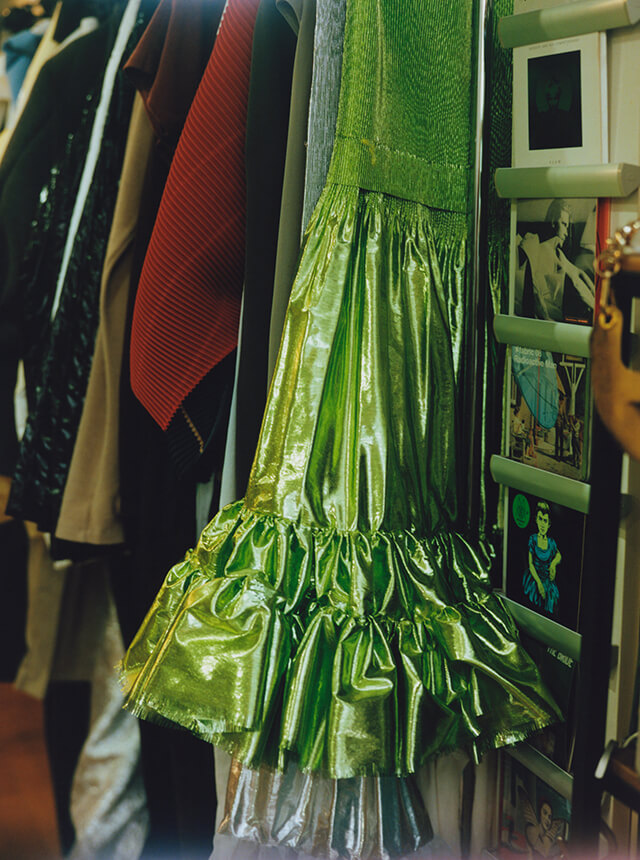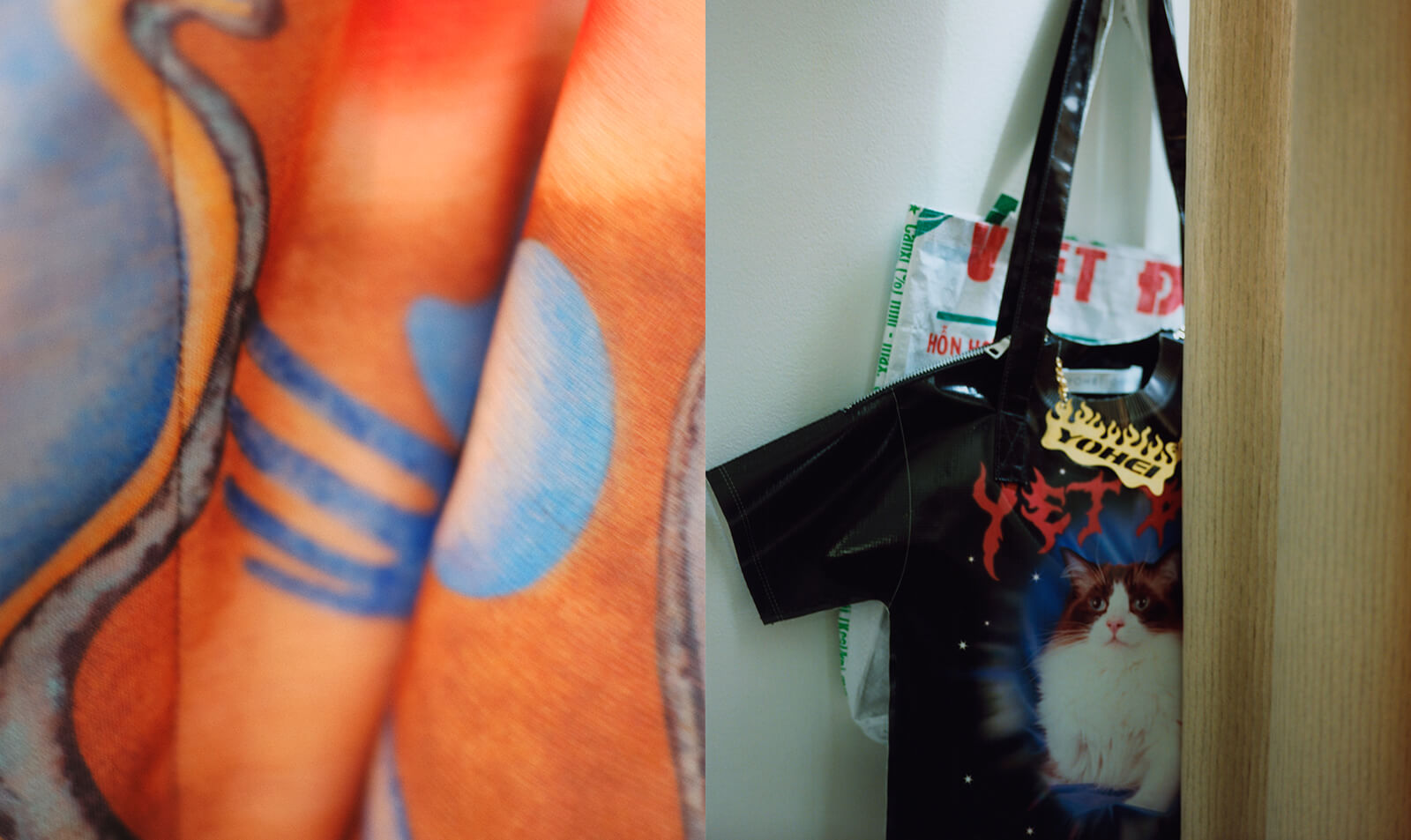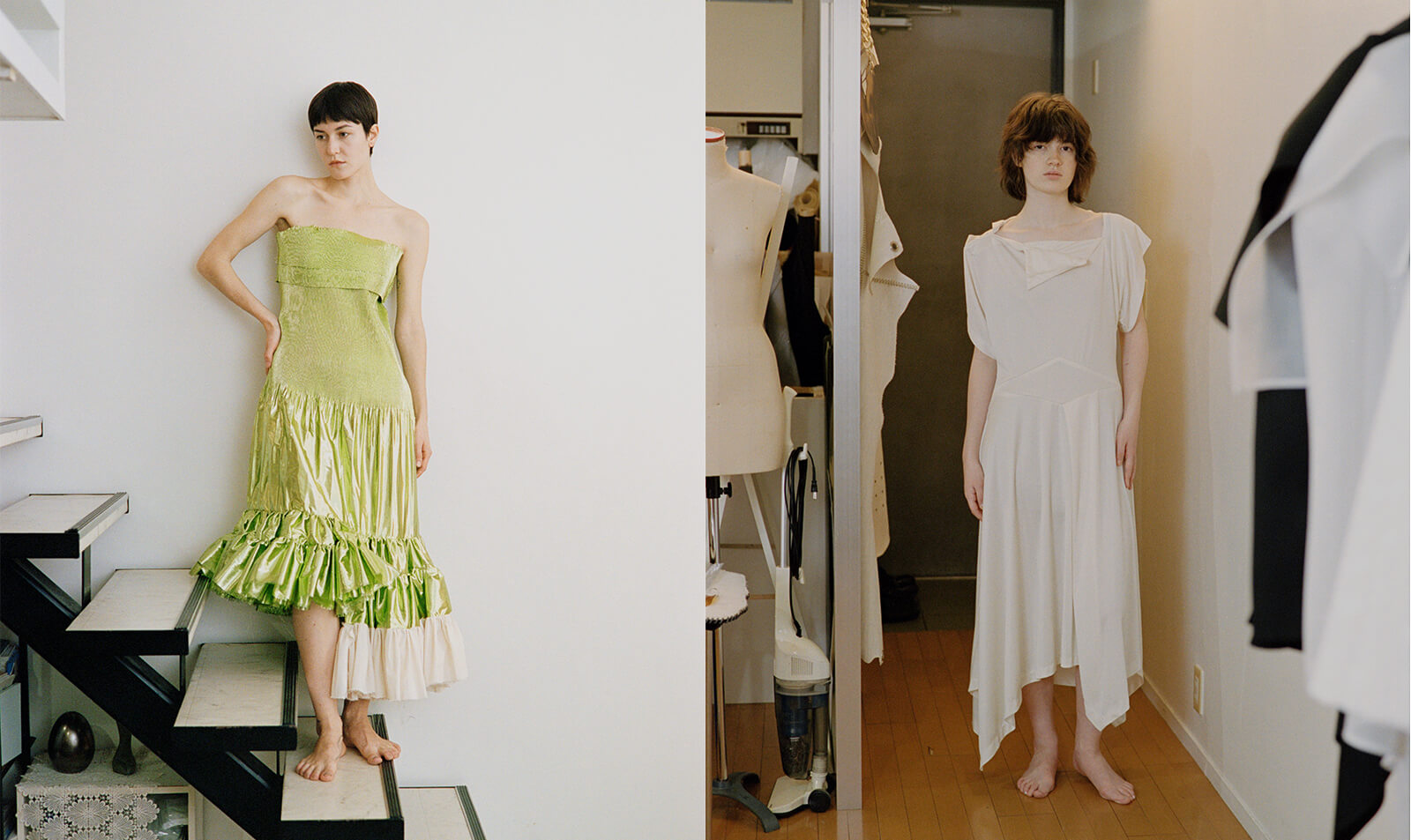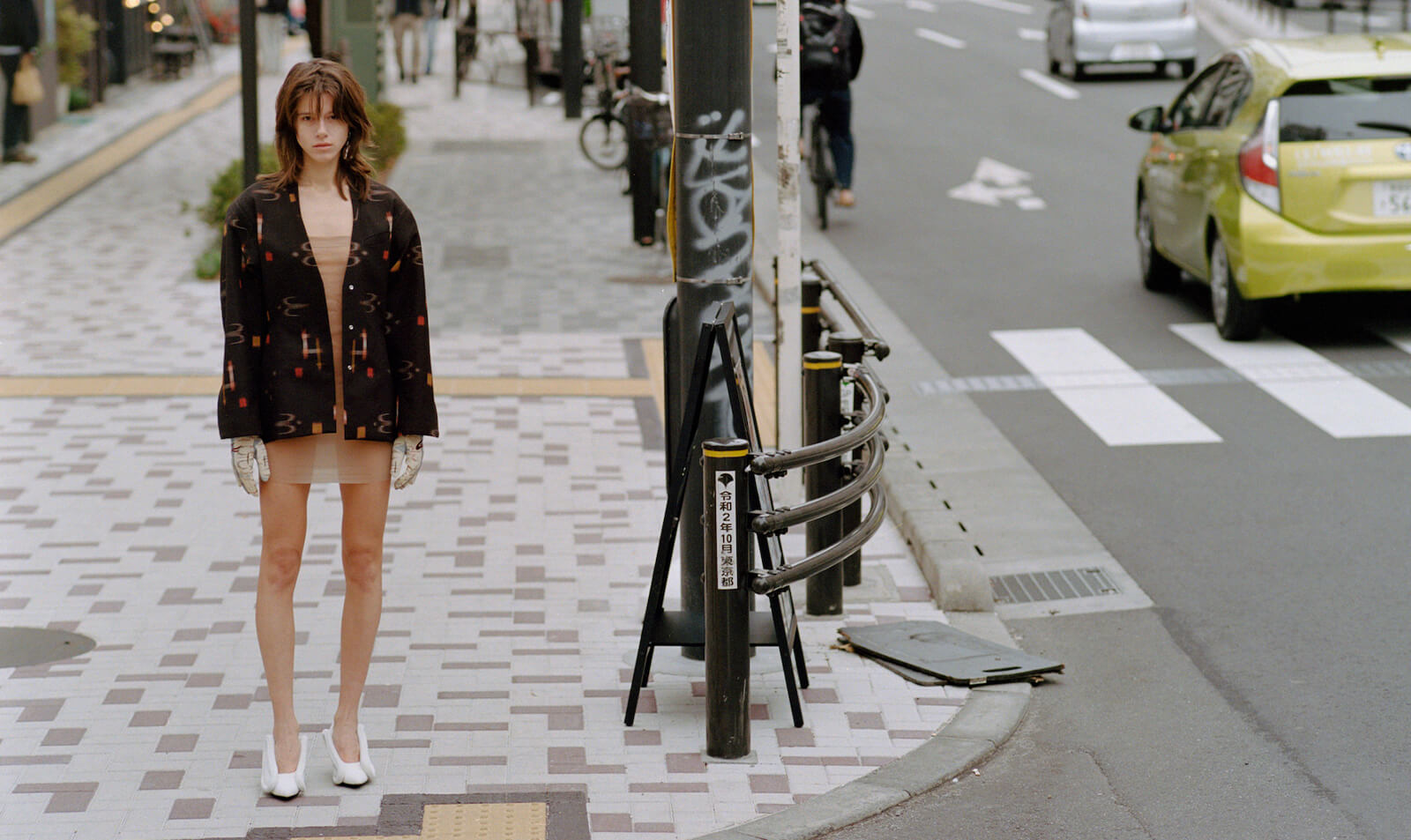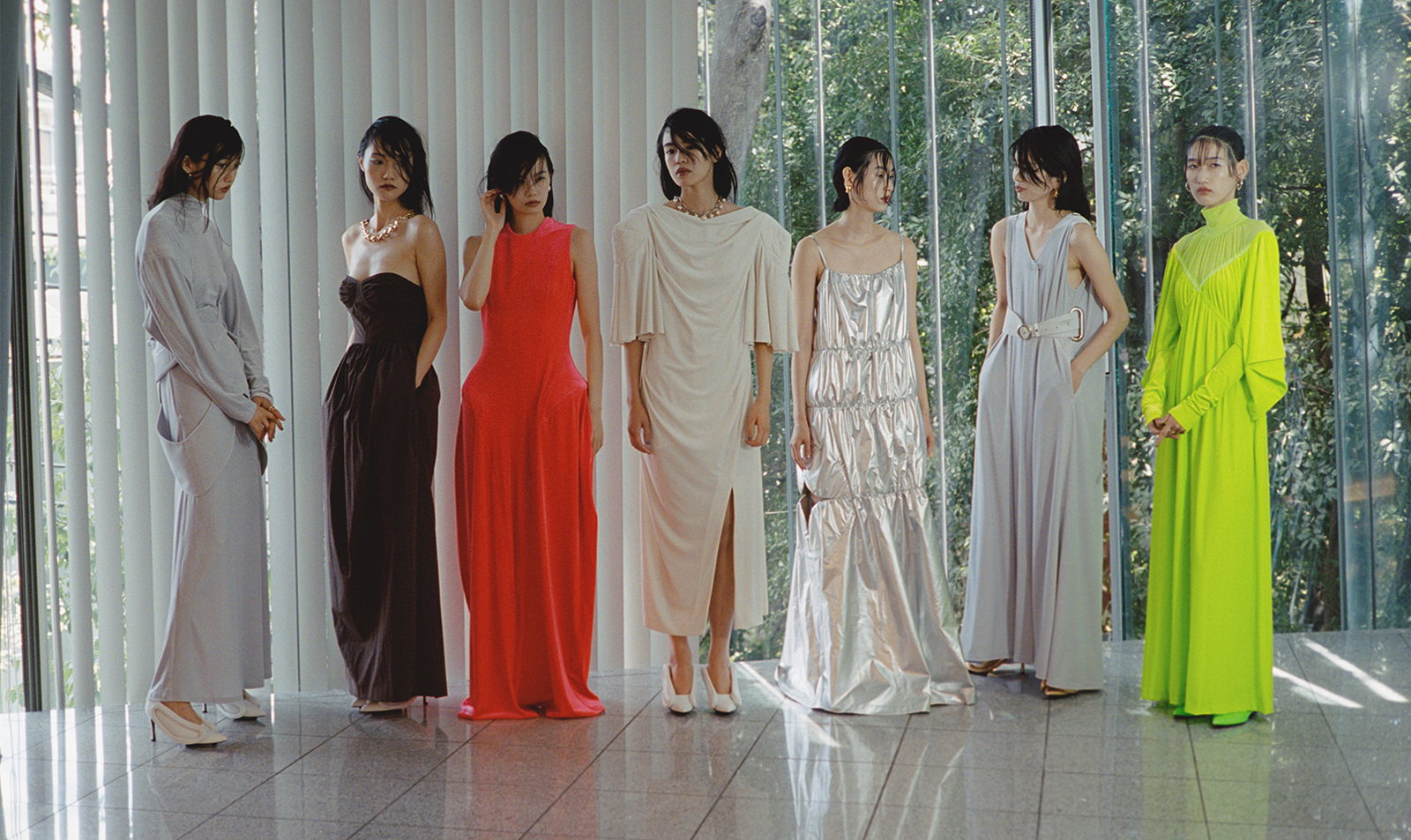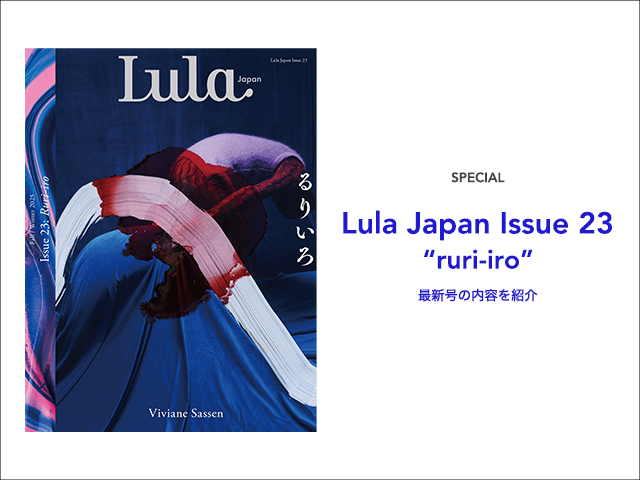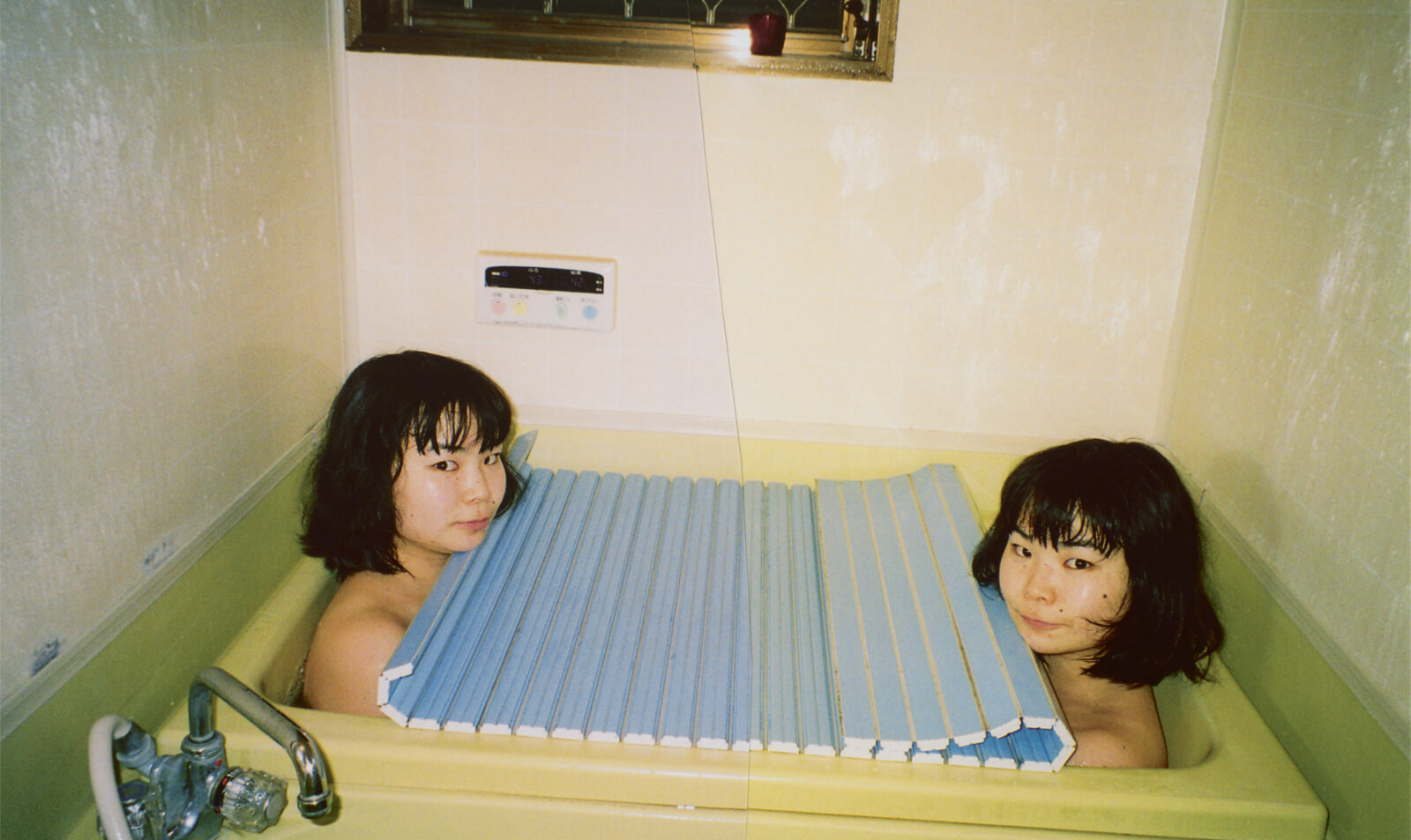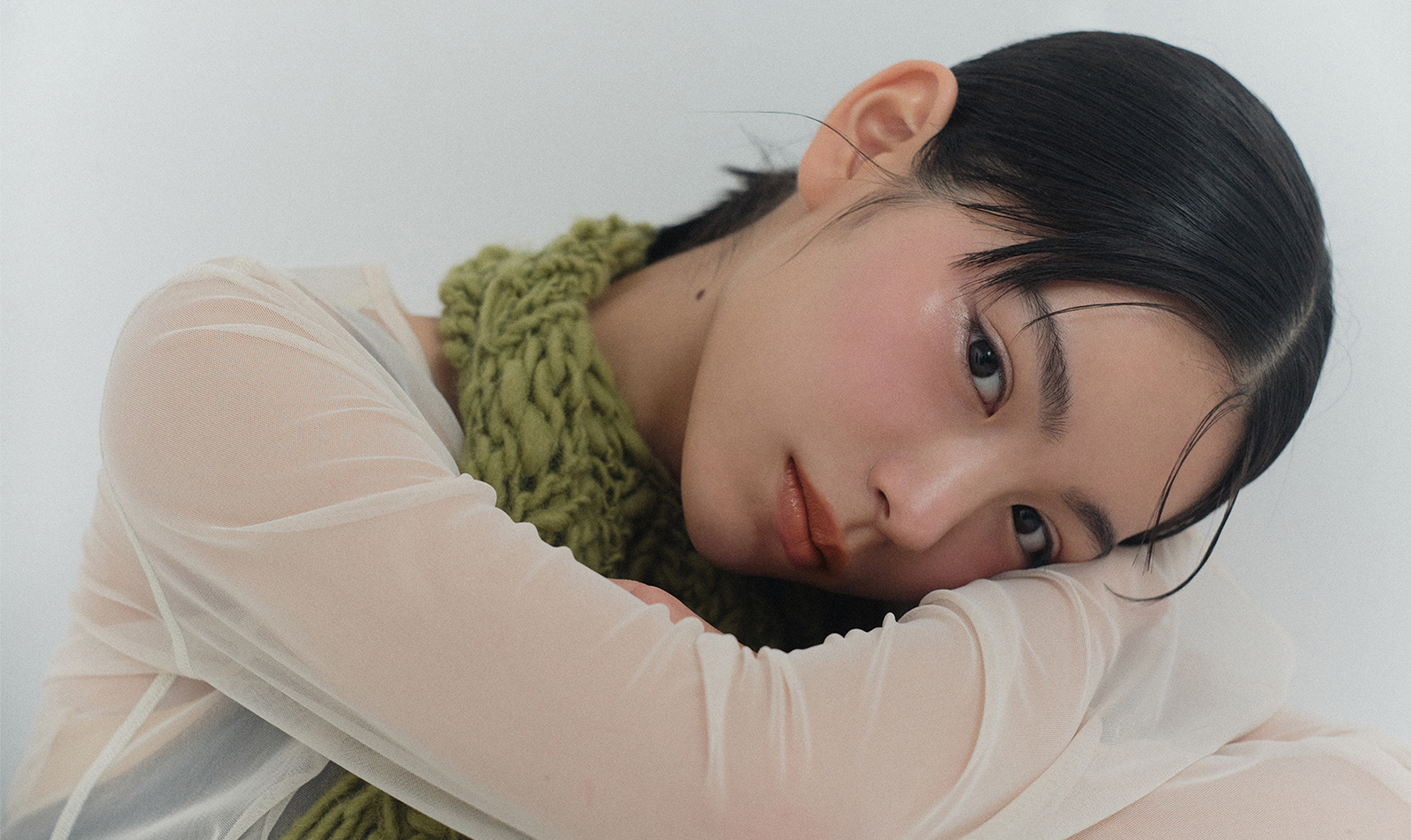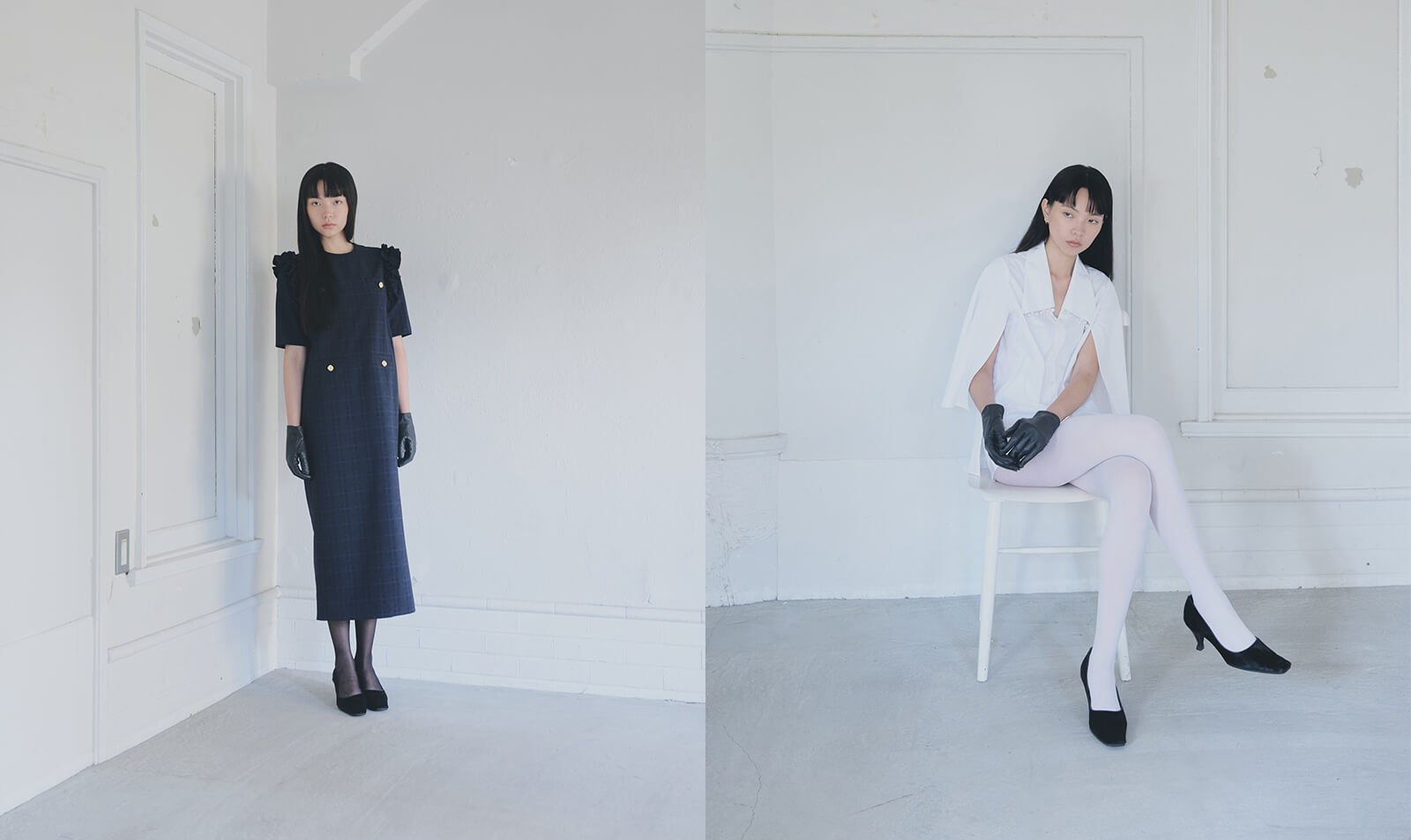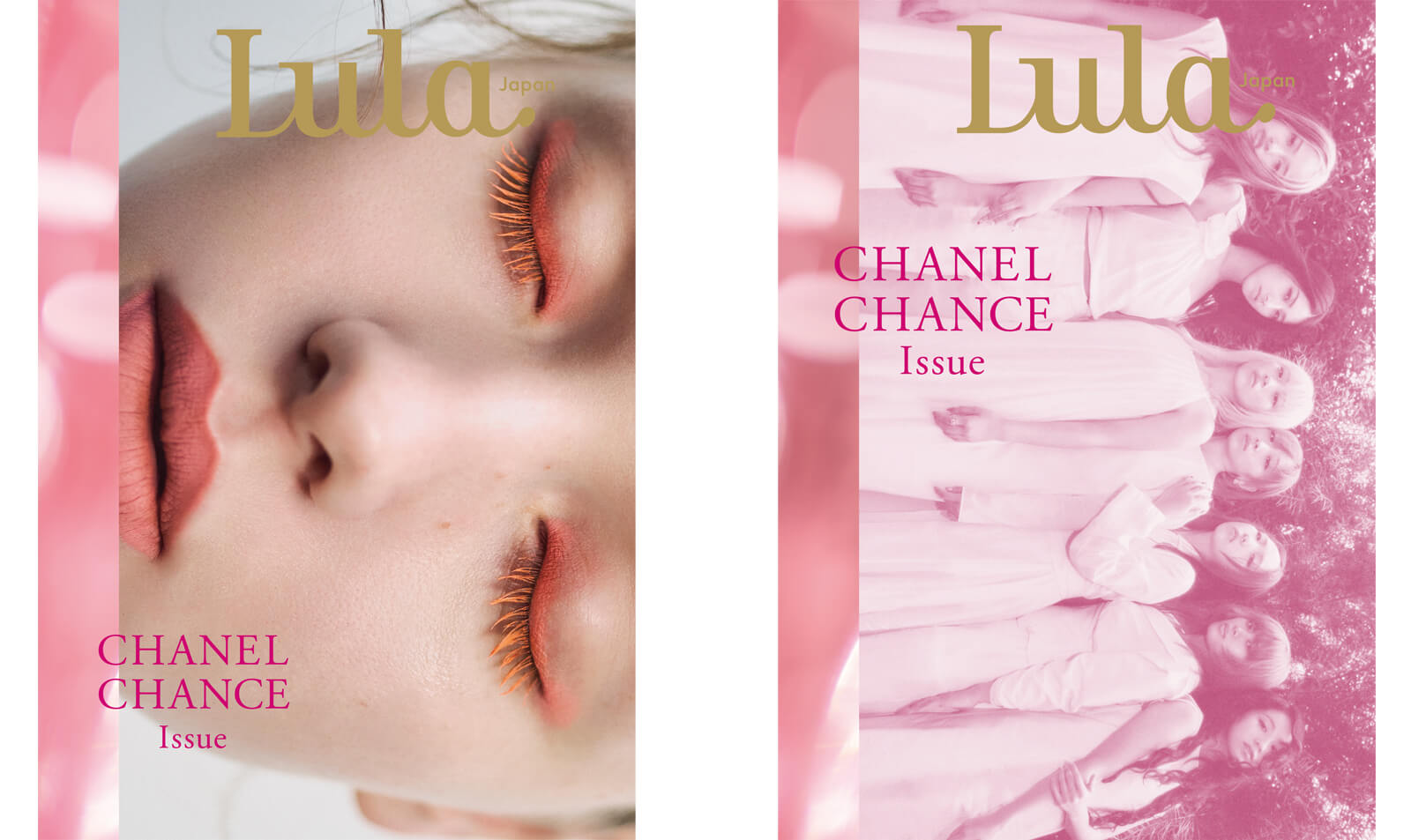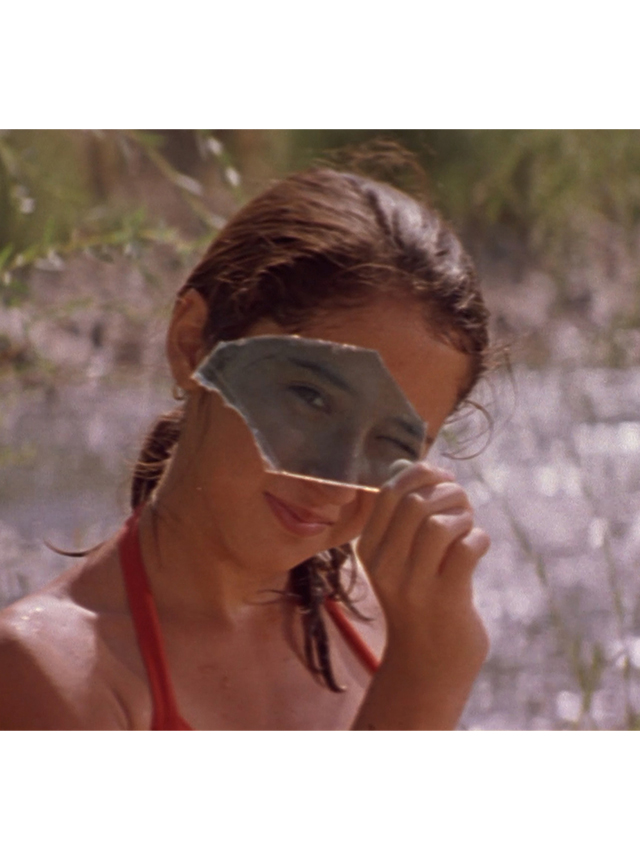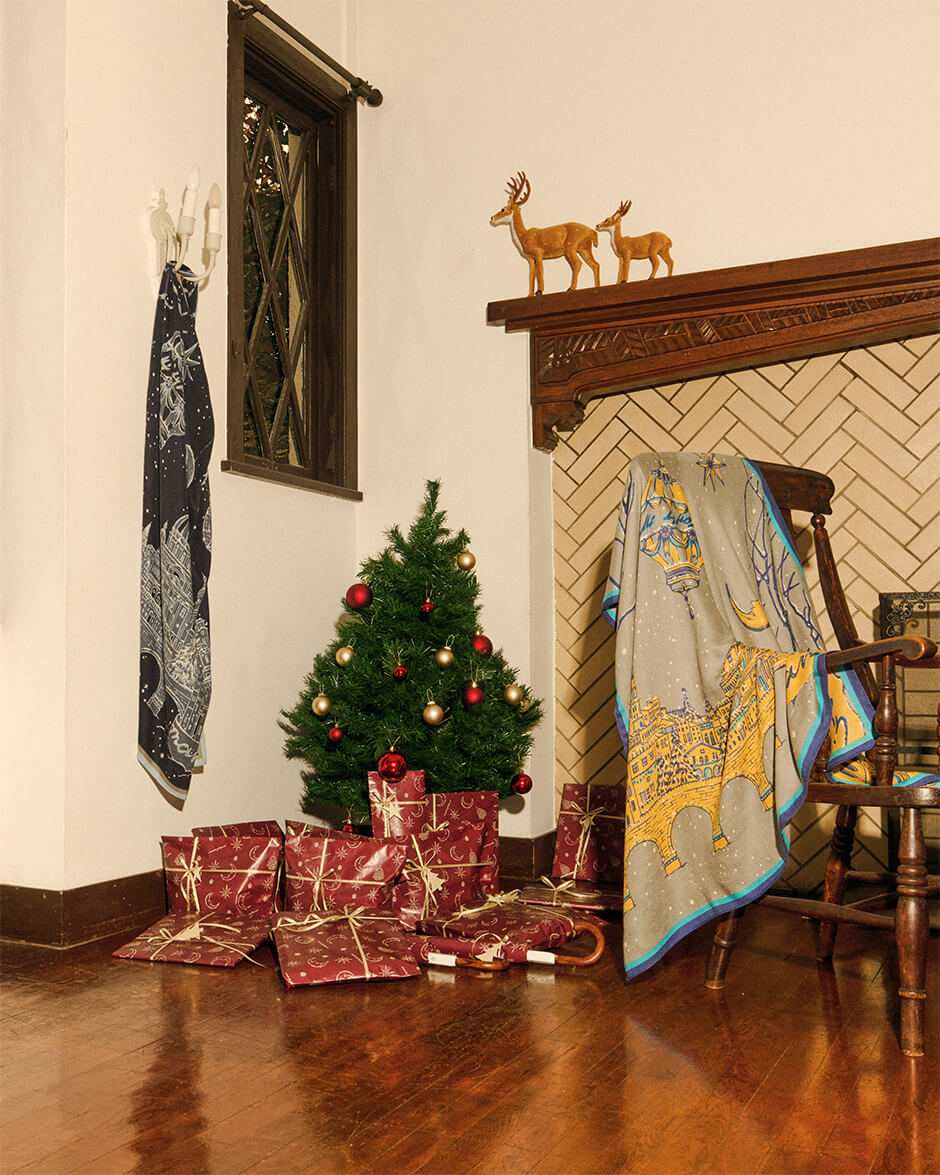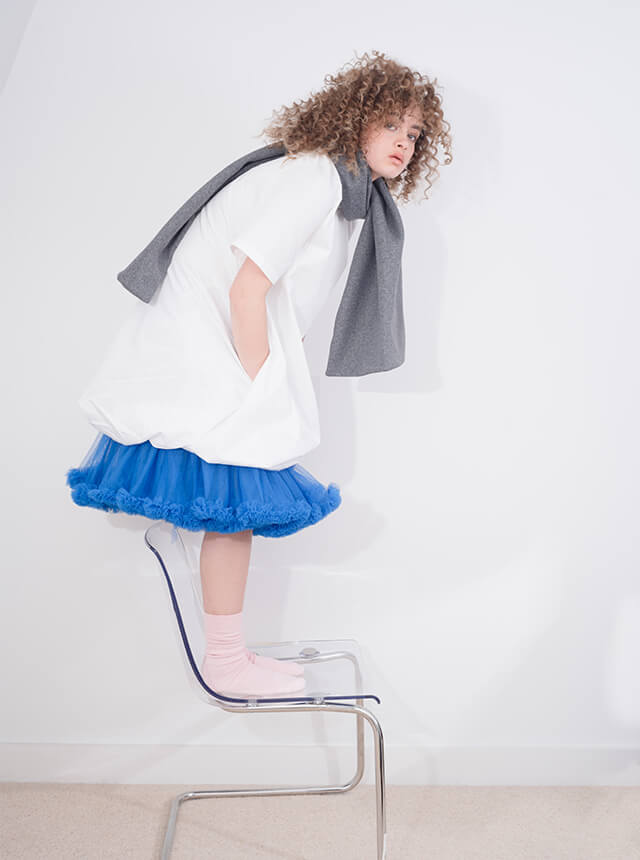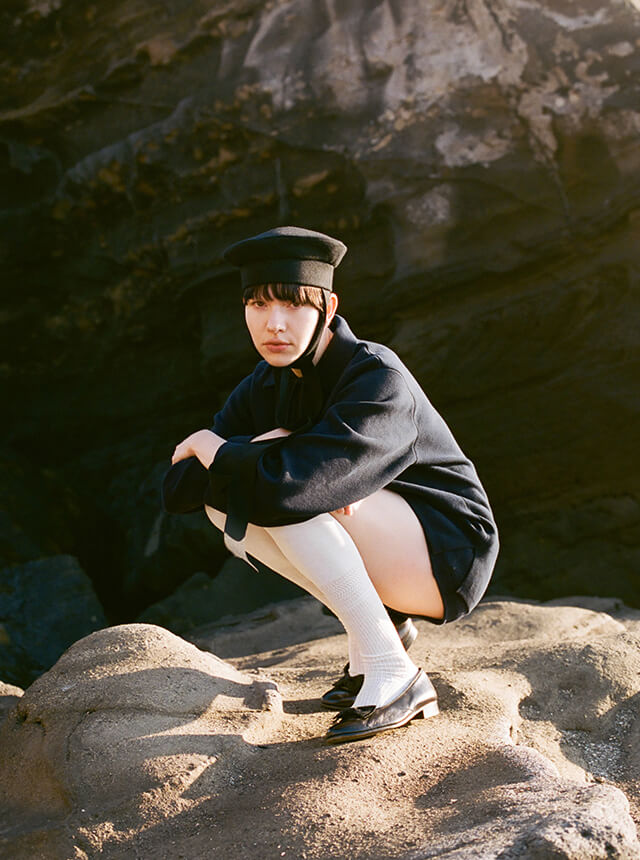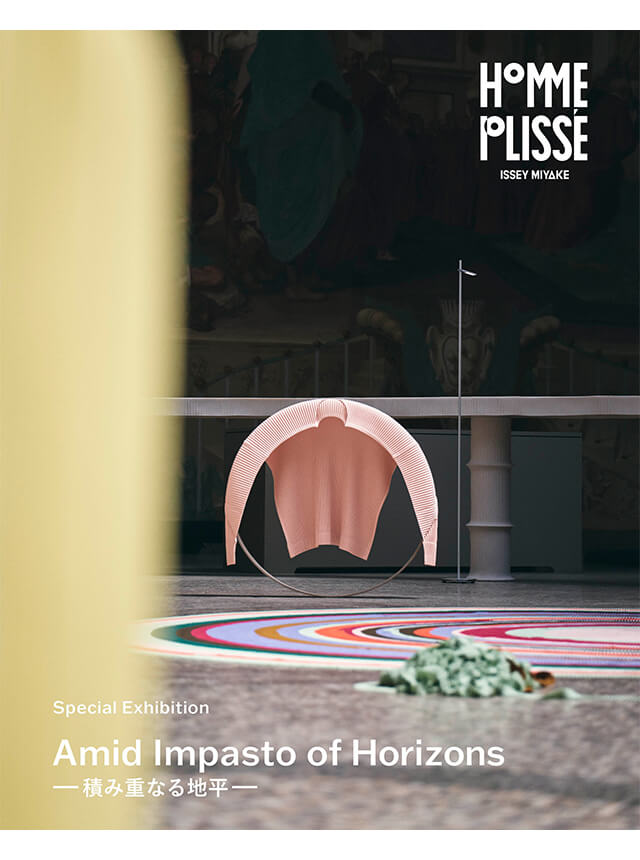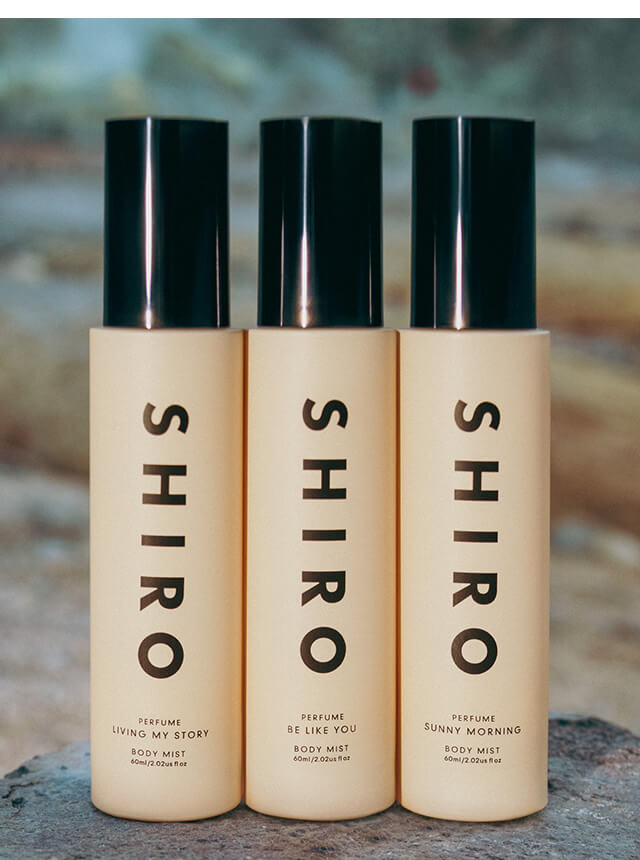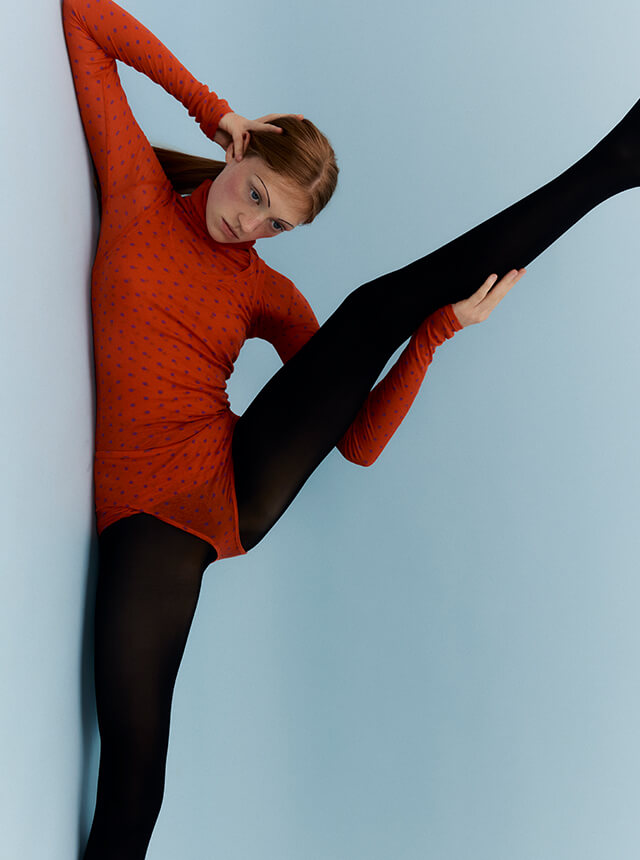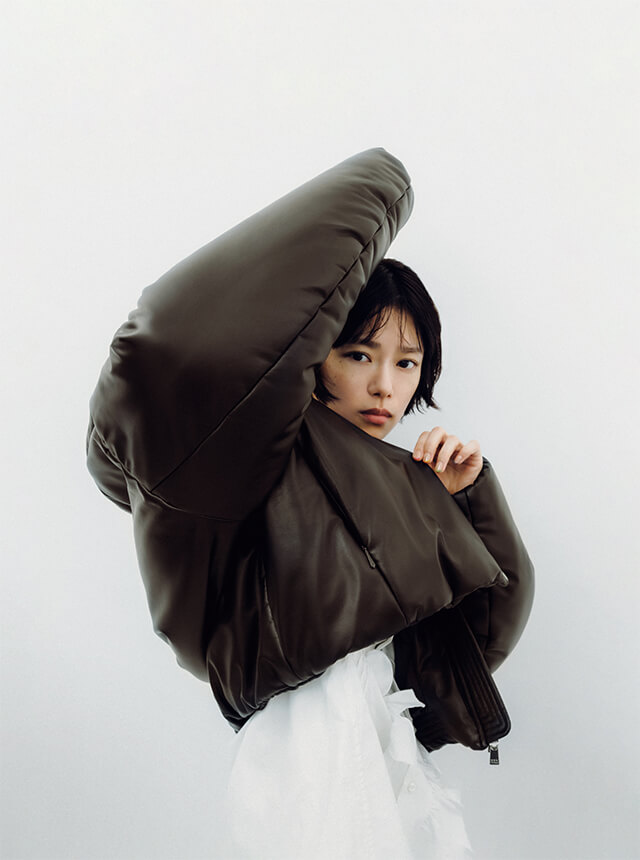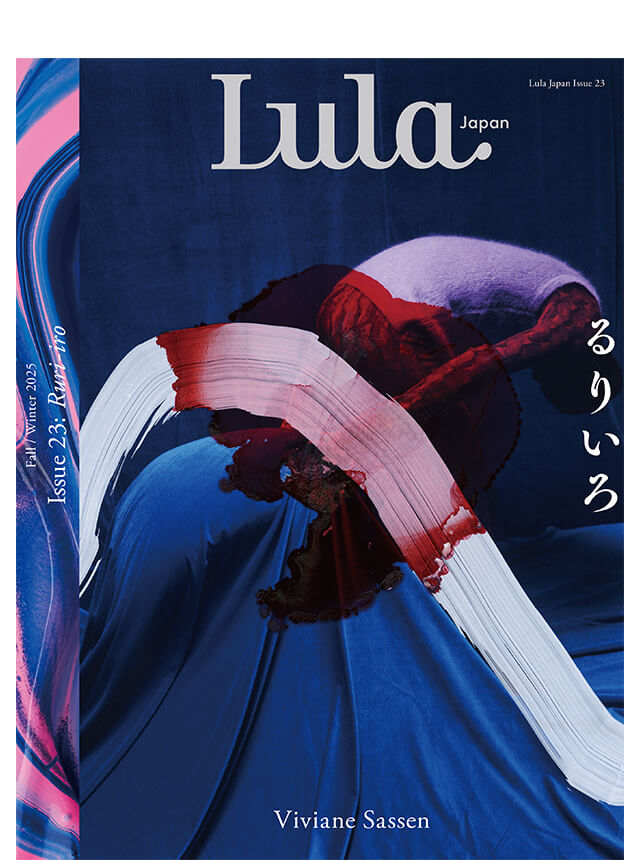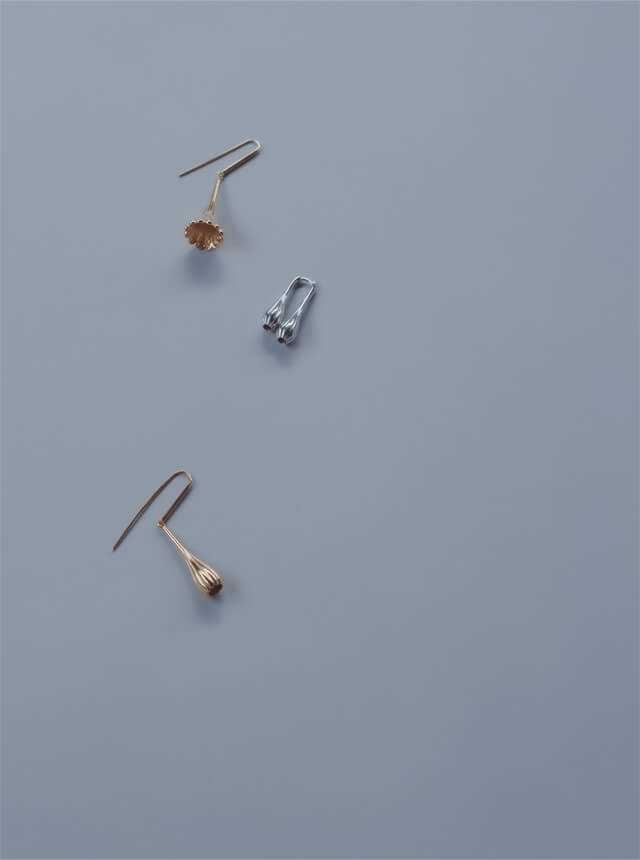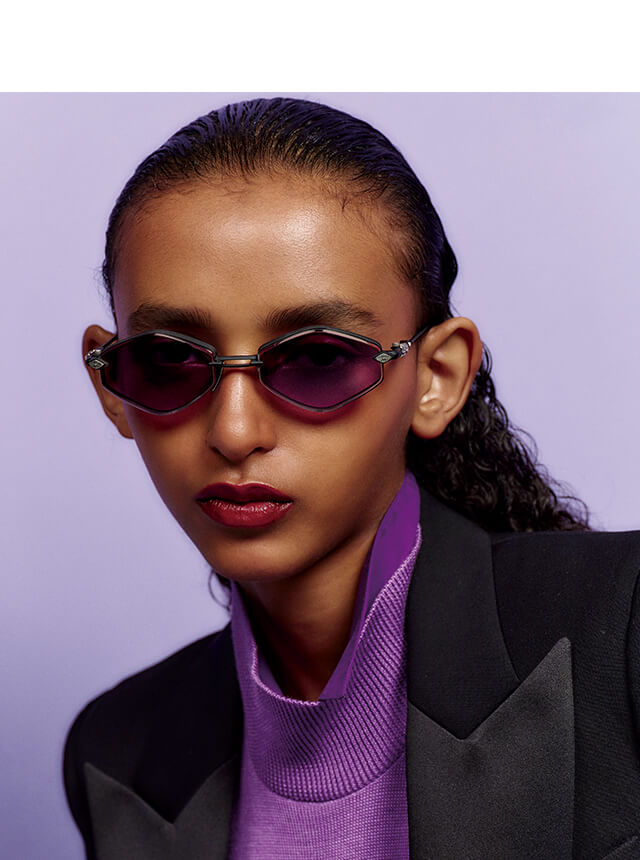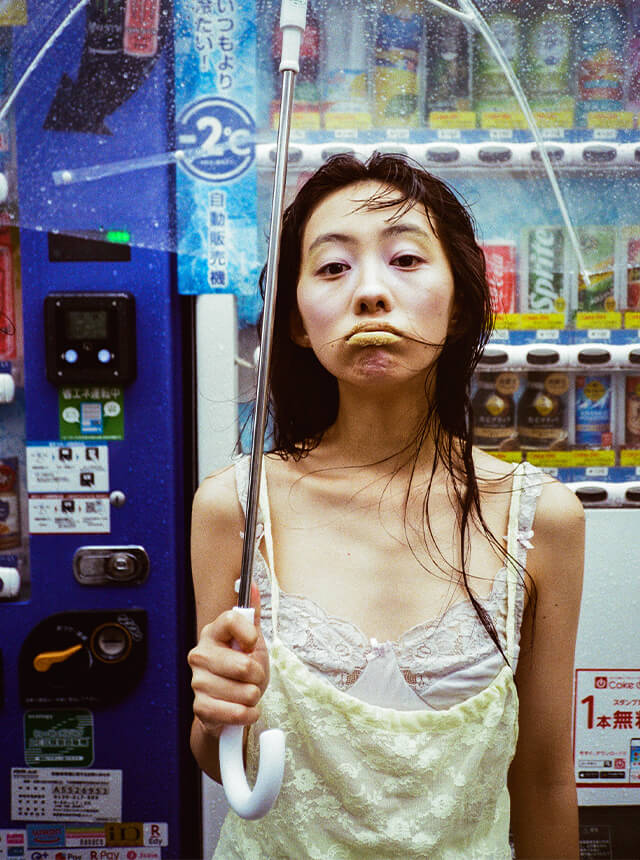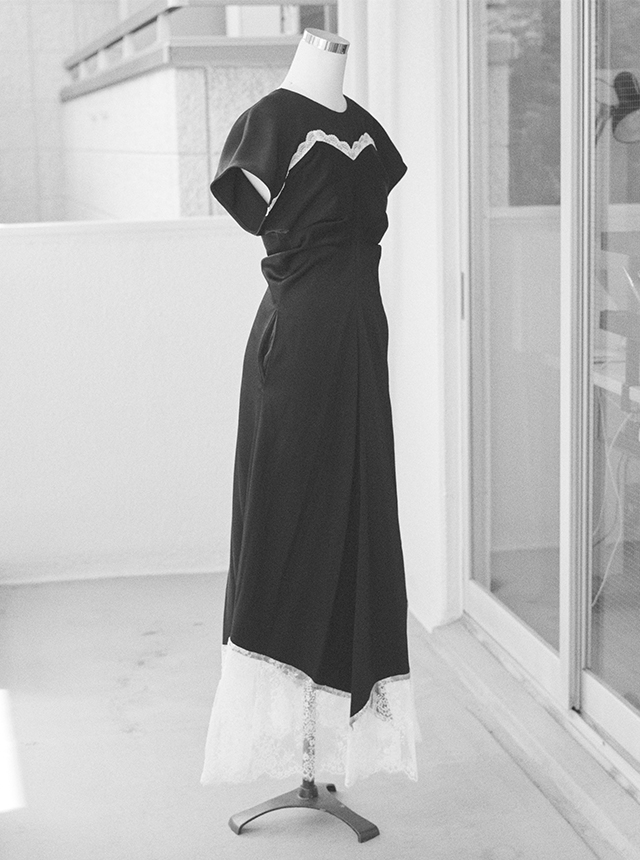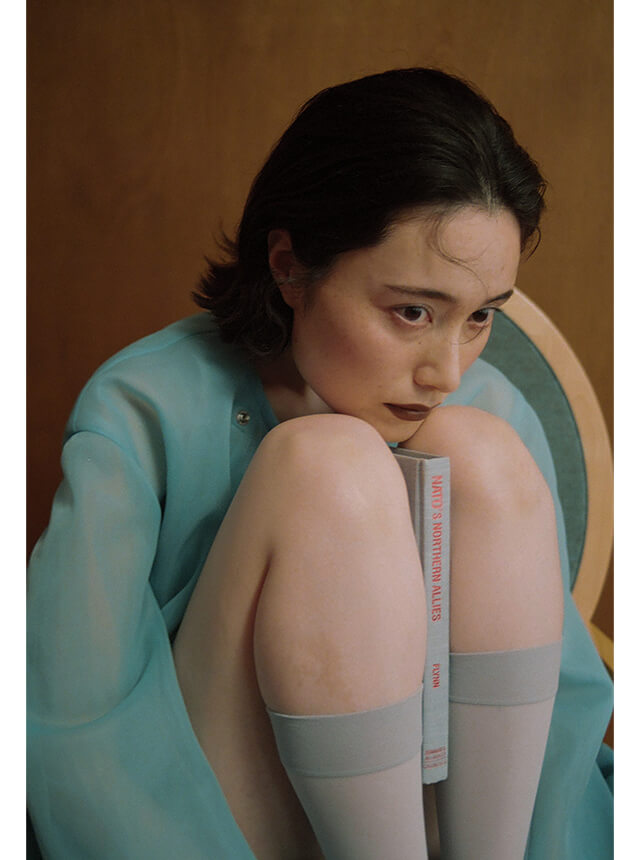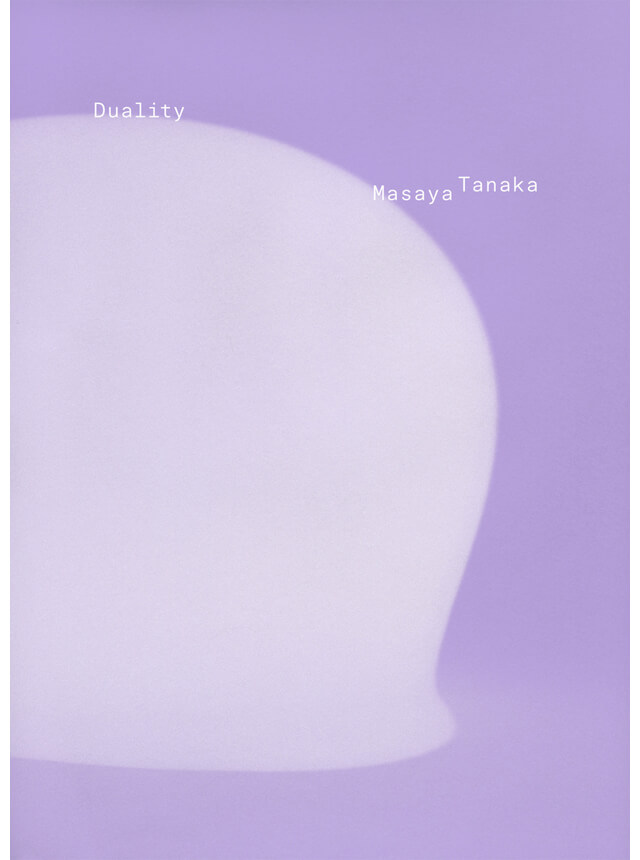2014年にデザイナー 大野陽平によって設立された、東京を拠点とするファッションブランド「YOHEI OHNO」。
意外性のあるシルエットや素材の組み合わせを特徴とし、それぞれのコレクションにはアートやカルチャー、そして「身体」という表現の場への深い好奇心が反映されている。
今回Lula Japan Webでは、昨年10周年を迎えた「YOHEI OHNO」のこれまでや今後の展望をインタビュー。
“YOHEI OHNO” is a Tokyo-based fashion brand established in 2014 by designer Yohei Ohno.
Characterized by unexpected silhouettes and material combinations, each collection reflects a deep curiosity about art, culture, and the ‘body’ as a place of expression.
Lula Japan Web interviewed “YOHEI OHNO,” which celebrated its 10th anniversary last year, about its past and future outlook.
>02はこちらから
YOHEI OHNO
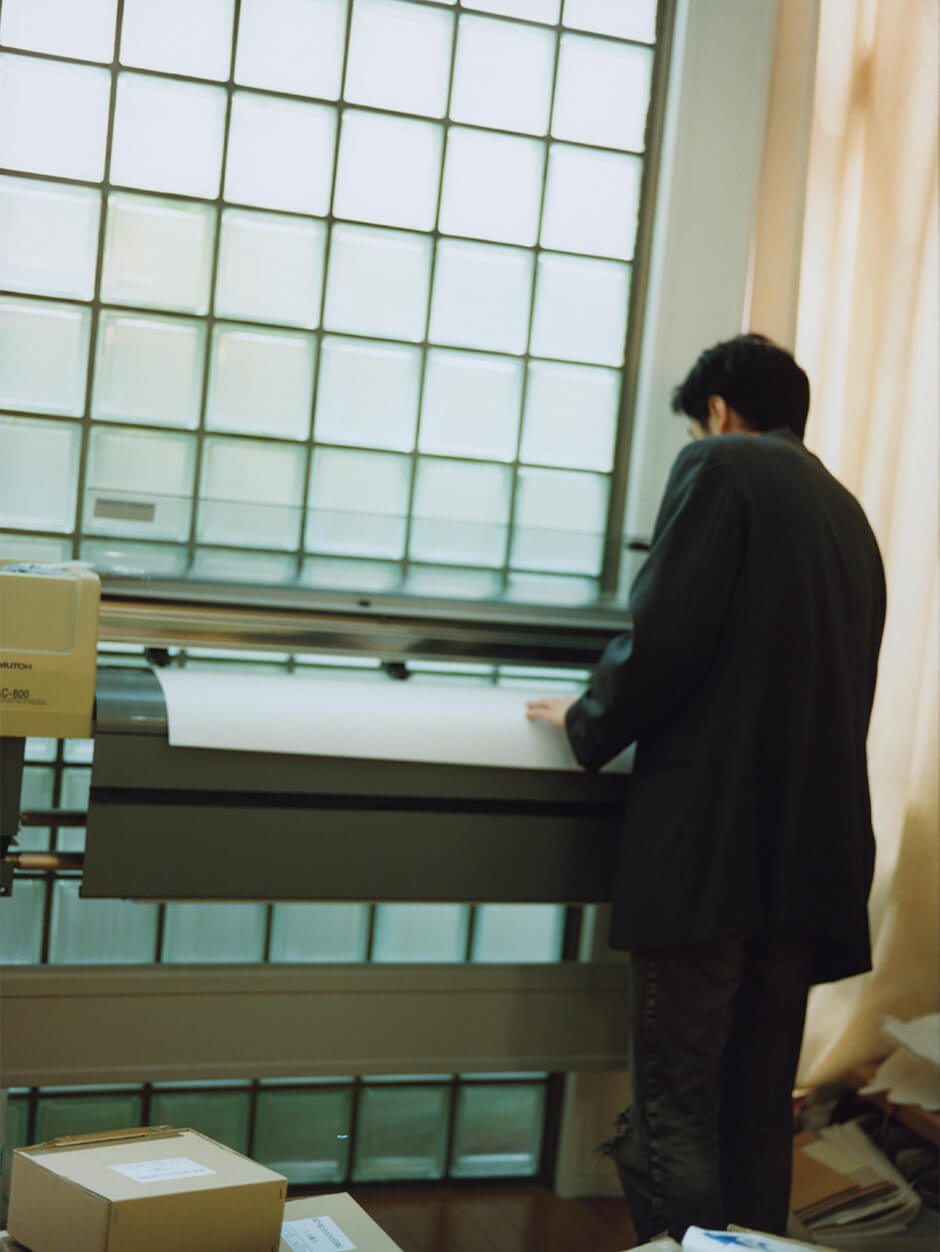
-ファッションに興味を持ったきっかけ、デザイナーになろうと思ったきっかけを教えてください。
⾼校⽣の時まではただ東京に行きたいという思いがあり、そのために受験勉強をして、哲学を学ぶつもりで東京の大学に進学しました。
でもいざ入学すると、学問に対してこれじゃないなという感じがしてきて、急にものづくりがしたくなったんです。
その理由は未だによく分かっていませんが、父親が美術の教師、祖父が和菓子の職人をやっていたり、そういう生まれながらの環境が影響して、なんとなく⾃分もものづくりの⽅向に気持ちが向いたのかなと。
そしてちょうどその時は東京でモードファッションが流行っていて、私もファッションが好きだったので、⼤学をやめて文化服装学院に⾏くことにしたんです。
⾼校の友達の1人が文化服装学院に⾏っていたこともあり、学校の存在は元々知っていました。
-How did you become interested in fashion, and why did you decide to be a designer?
Until I was a high school student, I just wanted to go to Tokyo. So I studied for the exams and entered a university in Tokyo, intending to study philosophy.
However, when I entered the university, I started to feel that what I was doing in academics was not right, and suddenly wanted to make things.
I still don’t really know why, but my father was an art teacher and my grandfather was a Japanese confectioner, so I guess my home environment somehow influenced my feelings towards manufacturing.
At that time, Japanese domestic fashion was very popular in Tokyo, including me, so I decided to quit university and go to Bunka Fashion College.
One of my high school friends had been there, so I already knew of the school.
-では幼い頃からものづくりは⾝近にあったのですね。
それが、そうでもなかったんですよね。
祖父が和菓⼦を家で作っていたわけでもなく、⽗親の描いた絵も少し飾ってあったかもしれませんが、うっすらと記憶に残っている程度です。
⽗は本当は美術⼤学に⾏きたかったのですが、それほど裕福な家庭ではなかったので、両親に公務員になる以外は許されなかった。
それで学校の美術教師という⼈⽣を選んだので、僕に対してはそういうことをしたくなかったようです。
だから、⼤学をやめると⾔った時、⺟親はかなり驚いていましたが、⽗親は寛⼤でしたね。
-So, manufacturing has been around you since you were a child.
Not really.
My grandfather did not make Japanese sweets at home, and there might have been some pictures by my father on the wall, but I only have a faint memory of them.
My father really wanted to go to an art college, but his family was not very wealthy, and his parents would not allow him to do anything other than becoming a public servant.
He chose a life as a school art teacher, and he didn’t want to make my way the same.
So when I said I was quitting University, he was tolerant whereas my mother was quite surprised.
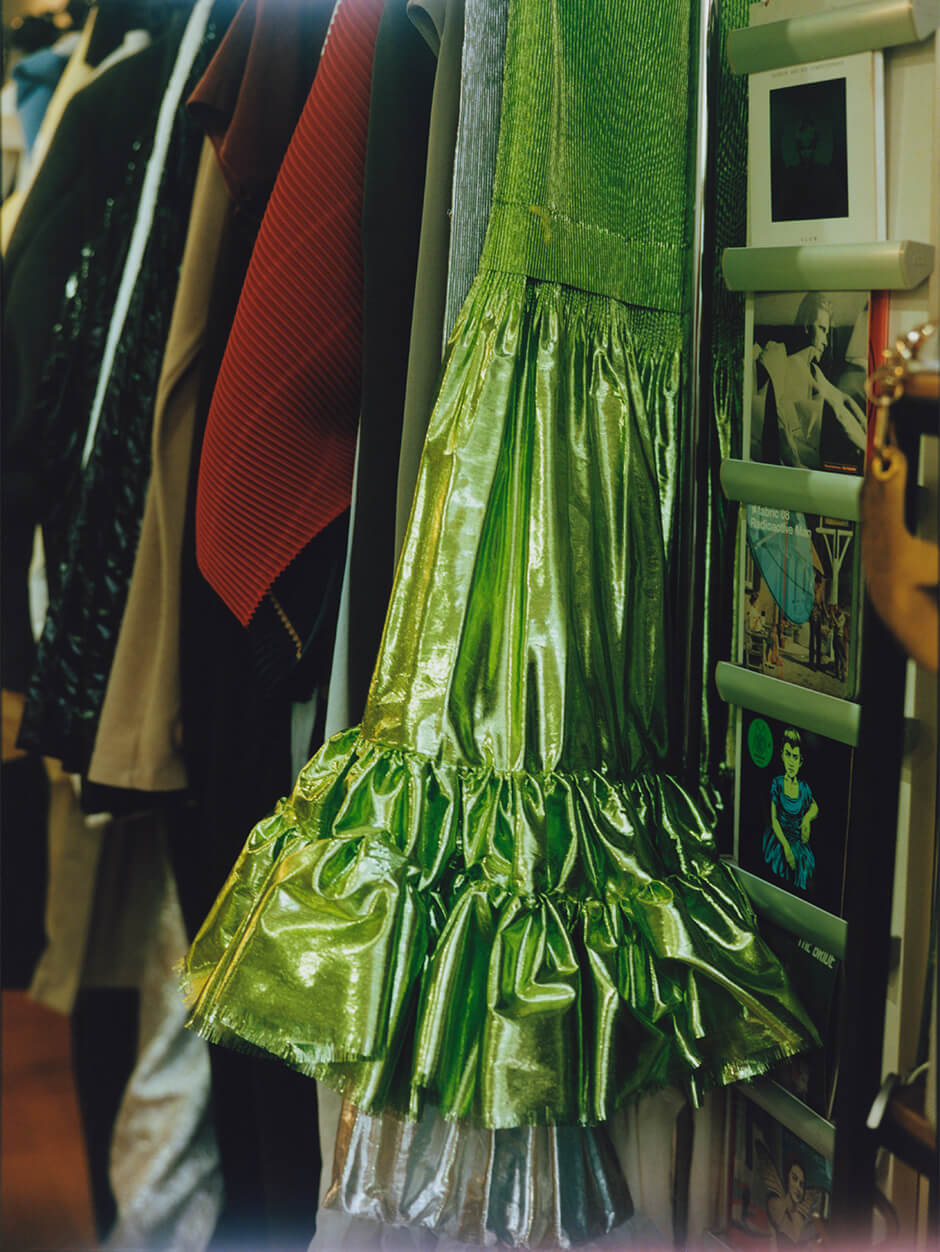
-人生において、および制作においてインスピレーション源となっているものはありますか。
⾃分にとって、洋服そのものはあまりインスピレーションにはなりません。
アートや建築など、⼈が作ったものやデザインしたもの全般に興味があり、自分が体験した何かを美しく形にしたいという精神自体を洋服の中でどう表現しようか、ということを試みています。
特にバウハウスが好きで、最初は単にモダンなデザインという印象がありましたが、 ドイツのベルリンやデッサウを訪れた時に、バウハウスという運動⾃体のエネルギーや、⾃分たちで⽂脈を変えていこうというパッション、新しいものを模索している粗削りなところに強く惹かれました。
あとはドイツ全体の、華美ではなく質素なものを良しとする美学に⽇本と通じるものを感じました。
バウハウスの世界観が、⾃分の多くを占めている気がします。
-What inspires you in life and in your work?
For me, clothes themselves are not much of an inspiration.
I am interested in all things made and designed by humans, such as art and architecture, and I try to express the spirit of desire to embody something that I experienced as beautiful in my clothes.
I am particularly fond of Bauhaus. At first, I had the impression that it was simply modern design. But when I visited Berlin and Dessau in Germany, I was strongly attracted by the energy of the Bauhaus movement, the passion to change the social and cultural context, and their immature side with an inquiring mind for something new.
I also found that the German aesthetic of simplicity and not glamor had something in common with Japan.
I believe that the Bauhaus worldview occupies a large part of myself.
-バウハウスのような運動を、ご自身もファッション界で起こしたいなどと思ったことはありますか。
バウハウスからヒントを得ているわけではありませんが、日本にはブランドやデザイナーは多くいますし繋がりもあったりするので、もう少しデザイナー主導でのムーブメントはあっても良いんじゃないかと思うことはあります。
多くのブランドが存在する中で日々サバイバルではありますが、私は新しい美意識への挑戦や、ゼロからクリエイションをすることを大事にしています。
一方で、トレンドをうまく汲み取り編集することが得意なデザイナーも日本では高いレベルで存在しています。
お客さんがちょうど欲しいものを提案する能力は、自分よりも彼らの方が長けているように感じます。
そういったスタンスの違うデザイナーと市場でフラットに並べられて競争力がつくのは良いことです。
でも、彼らにはできないものをあくまで市場の中に提案できるようにならなければいけません。
そして何より、ブランドの活動全体を通してクリエイションを発信していく必要があると思っています。
-Have you ever thought that you would like to start a movement like Bauhaus in the fashion industry?
While I am not taking inspiration from Bauhaus regarding this issue, there are many brands and designers in Japan and they have connections, so I sometimes think that there should be more designer-led movements.
In spite of daily struggle to survive in so many brands, I value the challenge of a new aesthetic and creating from scratch.
On the other hand, there are high-level designers in Japan who are skilled at capturing and editing trends.
I feel that they are better able to propose what customers want than I am.
Though it is good to be competitive in the marketplace with designers who have different stances, we must be able to offer what they cannot, and above all, it is necessary to transmit creation through our activities as a whole.
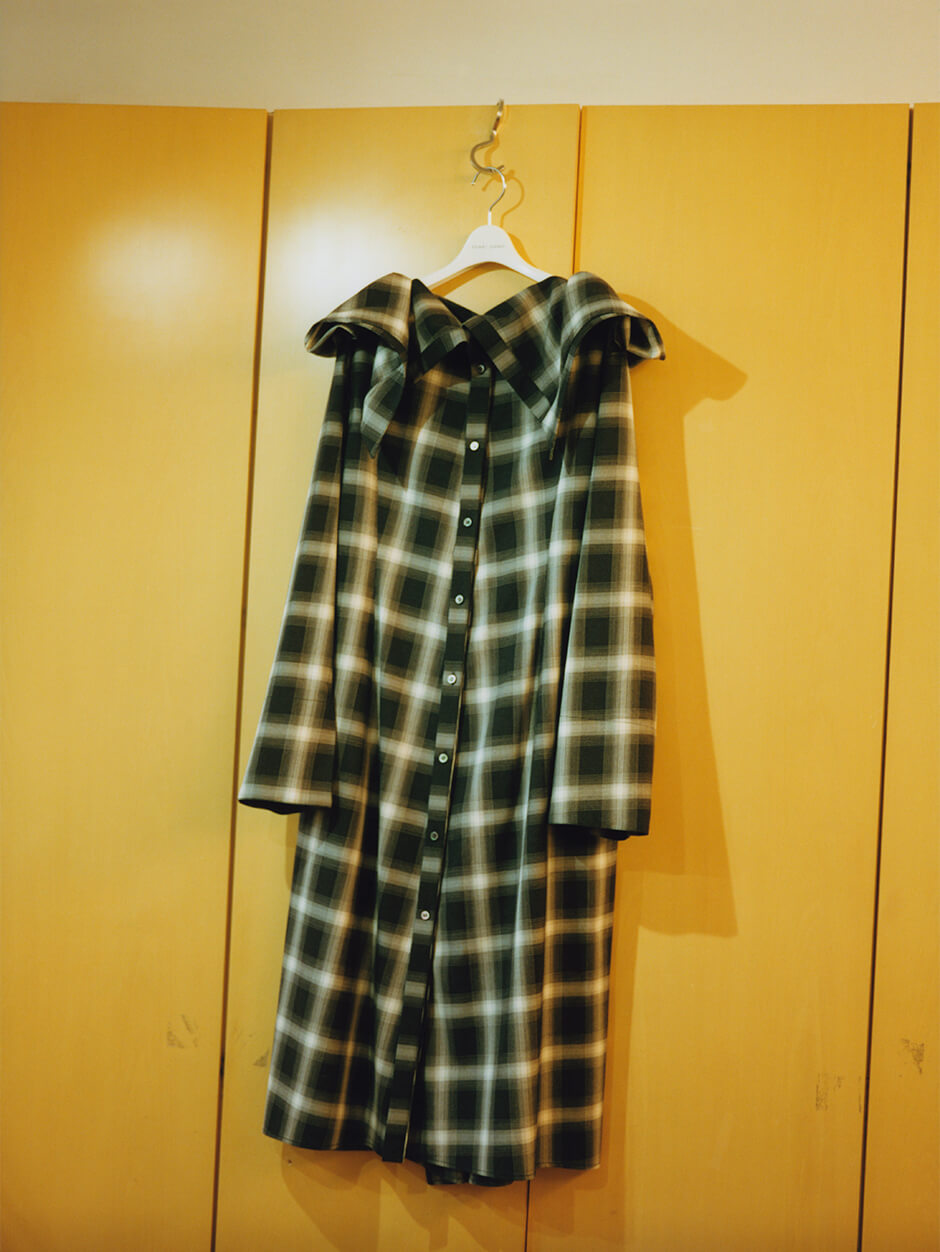
-「YOHEI OHNO」はフォルムが特徴的ですが、造形的なデザインはいつから始まったのですか。
文化服装学院に⼊った時に、元々⼿先が不器⽤だったのであまり上⼿に服作りができなかったんです。
でも周りを⾒ると、⼤体私と同じようにミシンもろくに踏んだことがないような友達でも、すごく綺麗に服を作っていて。
学校では綺麗に作れることが評価されていたので、最初の2年間ぐらいは結構劣等⽣で、⼤学辞めてきたのに何やってんだ、みたいな感じでした。
ただ、3年⽬ぐらいからようやくデザインの部分で先⽣から認められるようになってきたんです。
だからあまり綺麗に服は作れないけど、何か他のところで勝負しようという思考になり、オーソドックスではないけれど形がユニークな服や、縫製が苦⼿だけど簡単に作れる服など、 シンプルで造形的なものという基盤が、その辺りからだんだんと定まってきました。
-Pieces of “YOHEI OHNO” are characterized by their form. When did your figurative design begin?
When I entered Bunka Fashion College, I was not very good at making clothes because I was originally clumsy with my hands.
On the other hand, when I looked around, even my friends who had barely touched a sewing machine before were generally making beautiful clothes.
I was an underachiever for the first two years, and I was feeling like, “What the hell am I doing here after quitting university?”
However, when I was in my third year, I finally started to be recognized by teachers in the area of design.
Therefore, I decided to try to compete in some other way than making beautiful clothes, and gradually I established a foundation of simple and formative clothes, such as those that were not orthodox but had unique shapes, and those that were easy to make even though I was not good at sewing.
YOHEI OHNO
yoheiohno.com
YOHEI OHNO:
2014年にデザイナー 大野陽平によって設立されたファッションブランド。
彫刻的なフォルム作りと、芸術性と実用性のバランスを巧みに融合させたデザインで知られ、現代的かつ実験的な視点から製作を続けている。
A fashion brand founded by designer Yohei Ohno in 2014.
Known for its sculptural shaping and designs that skillfully blend the balance between artistry and practicality, they continue to produce from a contemporary and experimental perspective.
SHARE
RELATED ARTICLES
LATEST TOPICS
PICK UP
-
- Art&Culture
- 25.Dec.2025
-
- Fashion
- Art&Culture
- Beauty
- Encounter
- 26.Nov.2025
-
- Fashion
- 11.Dec.2025
-
- Encounter
- 18.Dec.2025
-
- Fashion
- 10.Dec.2025
-
- Fashion
- Art&Culture
- 22.Dec.2025
-
- Beauty
- 10.Dec.2025
-
- Encounter
- 02.Dec.2025
-
- Fashion
- 13.Nov.2025
-
- Fashion
- 03.Dec.2025
-
- Fashion
- Art&Culture
- Beauty
- Encounter
- 01.Oct.2025
-
- Fashion
- Art&Culture
- 04.Nov.2025
-
- Fashion
- 14.Oct.2025
-
- Fashion
- 31.Oct.2025
-
- Encounter
- 11.Sep.2025
-
- Fashion
- 08.Sep.2025
-
- Encounter
- 30.Sep.2025
-
- Art&Culture
- 01.Aug.2025
-
- Fashion
- Art&Culture
- 13.Jun.2025
-
- Fashion
- Art&Culture
- Beauty
- Encounter
- 09.Jun.2025
-
- Fashion
- Art&Culture
- 13.Jun.2025
-
- Fashion
- Art&Culture
- 04.Jun.2025
-
- Fashion
- Art&Culture
- Beauty
- Encounter
- 22.Apr.2025
-
- Fashion
- 15.May.2025

